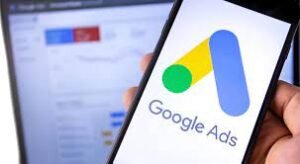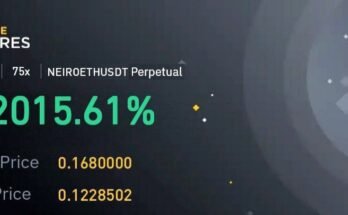Are you ready to master the art of closing Google Ads like a pro? As digital marketing continues to evolve, understanding how to effectively close your Google Ads can make all the difference in driving conversion rates and maximizing ROI. In this blog post, we will delve into the ins and outs of Google Ads closures, exploring techniques, common mistakes to avoid, tips for optimization, and what the future holds for this essential aspect of online advertising. Let’s dive in!

The Evolution of Google Ads
Google Ads have come a long way since their inception. Originally known as Google AdWords, this advertising platform has continually evolved to meet the changing needs of advertisers and users alike. What started as a simple pay-per-click system has now transformed into a complex ecosystem that offers various ad formats, targeting options, and bidding strategies.
Over the years, Google has introduced innovative features like responsive search ads, smart campaigns, and audience targeting tools to help advertisers reach their target audiences more effectively. With advancements in machine learning and AI technology, Google Ads have become more personalized and data-driven than ever before.
As consumer behavior shifts towards mobile devices and voice search, Google has adapted its ad offerings to cater to these trends. The rise of video ads on platforms like YouTube further demonstrates Google’s commitment to staying ahead of the curve in digital advertising.
Understanding the Closing Process
Understanding the closing process of Google ads is crucial for maximizing your ad campaigns’ effectiveness. It involves the final steps you take to convert potential leads into customers.
When a user sees your ad, they are already interested in what you offer. The closing process is about sealing the deal by compelling them to take action, whether it’s making a purchase or signing up for a service.
One key aspect of understanding this process is knowing your target audience inside out. What motivates them? What pain points do they have that your product can solve? Tailoring your closing strategy to address these specific needs can significantly increase conversion rates.
Moreover, creating a sense of urgency can push hesitant prospects over the edge. Limited-time offers or exclusive deals can create FOMO (fear of missing out) and prompt users to act quickly.
By grasping the nuances of the closing process, you can fine-tune your Google ads to drive results and achieve your marketing goals effectively.
Techniques for Closing Google Ads Effectively
When it comes to closing Google ads effectively, there are several techniques that can make a significant impact on the success of your campaigns. One key technique is creating a sense of urgency in your ad copy. By including phrases like “limited time offer” or “act now,” you can encourage users to take action quickly. Another effective technique is using strong call-to-action statements that clearly tell users what they should do next, whether it’s clicking a link, making a purchase, or signing up for more information.
Additionally, leveraging ad extensions can help provide additional information and opportunities for users to engage with your ad. Including sitelinks, callouts, and structured snippets can enhance the visibility and relevance of your ads. Moreover, optimizing your landing pages to align with the messaging in your ads is crucial for maintaining consistency and guiding users towards conversion.
Furthermore, A/B testing different ad variations can help identify which approaches resonate best with your target audience. By analyzing performance metrics such as click-through rates and conversions, you can refine your strategies to maximize results. Implementing these techniques strategically will improve the effectiveness of your Google ads’ closure rate over time.
Common Mistakes to Avoid When Closing Google Ads
When it comes to closing Google Ads, there are some common mistakes that advertisers should steer clear of. One frequent blunder is neglecting to include a strong call-to-action in the ad copy. A compelling CTA can significantly impact click-through rates and conversions.
Another mistake to avoid is not utilizing ad extensions effectively. These extensions provide additional information and links for users, enhancing the ad’s visibility and relevance. Ignoring them could limit the ad’s performance potential.
Furthermore, overlooking negative keywords can lead to wasted ad spend on irrelevant clicks. By carefully selecting negative keywords, advertisers can refine their targeting and reach a more qualified audience.
Failing to track and analyze campaign data regularly is a crucial error. Monitoring key metrics allows for adjustments and optimizations to improve ad performance over time.
By avoiding these common pitfalls, advertisers can optimize their Google Ads campaigns for better results.
Tips for Optimizing Your Ad’s Closure Rate
Have you been struggling to get your Google ads to close effectively? Here are some tips that can help optimize your ad’s closure rate:
Make sure your ad copy is clear, concise, and engaging. Use strong calls-to-action that prompt users to take immediate action.
Utilize relevant keywords in your ad content to ensure it reaches the right audience. Research and incorporate popular search terms that align with your target market.
Additionally, A/B test different variations of your ads to see which ones perform best. This will provide valuable insights into what resonates with your audience.
Moreover, consider the timing of your ads. Schedule them to appear when your target demographic is most active online for optimal visibility.
Monitor and analyze the performance of your ads regularly. Make adjustments based on data-driven insights to continuously improve their effectiveness.
By implementing these tips, you can enhance the closure rate of your Google ads and drive better results for your campaigns.
The Future of Google Ads and Its Impact on Closures
As technology continues to advance at a rapid pace, the future of Google Ads is set to become even more dynamic and personalized. With artificial intelligence and machine learning playing a significant role, ads are becoming increasingly tailored to individual preferences and behaviors. This hyper-personalization will significantly impact how closures are managed within Google Ads campaigns.
Furthermore, as voice search and visual recognition technologies improve, advertisers will need to adapt their strategies to ensure that ads remain effective in these new formats. Understanding user intent will be crucial in crafting compelling ad copy that resonates with audiences across different platforms.
Moreover, the rise of augmented reality (AR) and virtual reality (VR) opens up exciting possibilities for immersive advertising experiences. Advertisers who embrace these technologies early on stand to gain a competitive edge in capturing consumer attention and driving conversions.
Staying abreast of emerging technologies and trends will be essential for advertisers looking to optimize their closure rates in the ever-evolving landscape of Google Ads.
Conclusion
Conclusion
Google Ads have come a long way in revolutionizing online advertising. Understanding how to effectively close Google Ads is crucial for maximizing your advertising efforts and reaching your target audience. By implementing the right techniques, avoiding common mistakes, and optimizing your ad’s closure rate, you can improve the overall performance of your ads.
As Google continues to innovate and update its advertising platform, staying informed about new trends and features will be essential for staying ahead in the digital marketing landscape. Embracing these changes and adapting your closing strategies accordingly will be key to achieving success with Google Ads.
Remember that mastering the art of closing Google Ads is an ongoing process that requires continuous learning and experimentation. By following the tips outlined in this article and staying proactive in refining your approach, you can enhance the effectiveness of your ads and drive better results for your business.




